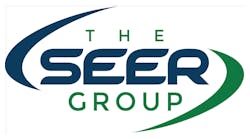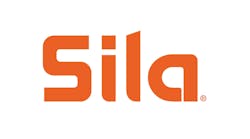BY ROBERT P. MADER of CONTRACTOR’s staff
OAK BROOK, ILL. — The mechanical contracting industry has had problems getting past obstinate high school guidance counselors, so now it’s taking a different approach — get to prospective employees through their physics teachers.
The National Foundation for Energy Education in Reston, Va., has already produced a high school physics curriculum for the HVAC industry. The object of the curriculum is to show students the practical aspects of the science theories they have been learning and to give them an idea about career opportunities.
Gerry Katz, president of NFEE, presented his plans for the plumbing curriculum in a meeting June 18 here with local contractors; representatives of the Plumbing and Mechanical Contractors Association of Northern Illinois; Don Stunkel, apprenticeship-training coordinator for United Association Local 501; and Jill Dirkson from the American Society of Plumbing Engineers.
The HVAC kit, “HVAC&R Professionals in the Classroom,” covers principles such as convection, temperature stratification, boiling, compression, evaporation and condensation.
The HVAC kit includes an instructional video for the teacher, 10 video segments for classroom use, hardware for demonstrations and support materials. An HVAC practitioner can come in to answer questions if such a person is available. The cost of the kit is $150, but sponsors typically pick up the cost and the kit is provided free to teachers.
Katz said he envisions an identical program for the plumbing industry. Anyone can sponsor a kit — contractors, wholesalers, unions, specifiers, their professional associations or individuals.
Like the HVAC kit, the estimated cost of the kit to plumbing professionals will be about $150. Teachers will receive a free kit if they agree to participate in a pre- and post-use online survey.
NFEE and sponsors have also conducted seminars with science teachers to let them know about the HVAC kit, its contents and how it can be used. Science teachers like the kit because it makes their jobs easier, Katz said. The teachers are free to cherry-pick lessons from the kit and may teach five lessons or 20 if they desire.
Science teachers are already required by state requirements to provide lessons on Bernoulli’s principles, pressure, buoyancy and hydraulics, Katz noted. A plumbing-oriented science curriculum would mesh with those requirements.
In addition to the eight to 10 science demonstrations and related plumbing application information, students will learn about the career opportunities in the plumbing industry. The plumbing course has the potential to reach 150,000 students each year, Katz said.
The title of the proposed kit is “Plumbing Physics — The Practical Application of Fluid Dynamics.” Students would learn about Boyle, Charles, Archimedes and Lussac and how their laws are used in plumbing. The teacher can use modules individually through the year when it’s time to teach that concept or can use the lessons in sequence. At the end of the course, a plumbing professional can come into the classroom for a 45- to 180-minute presentation. NFEE also recommends constructing an online activity for the Web site SciencePipeline.com.
The kit would contain hardware and supplies for demonstrations and student investigations, a video and a program guide to assist teachers and plumbing professionals conduct a 45- to 120-minute program, and the History Channel’s video — “Plumbing: The Arteries of Civilization.” The curriculum will cover characteristics and structure of liquids and gases, pressure, laws and principles, siphons, capillary action and plumbing chemistry.
Katz’s current objectives are to obtain funding from plumbing manufacturers and trade and professional associations for development of the kit and for teacher training workshops. He plans to make presentations at local and national association meetings.
Katz has estimated he will need about $75,000 to develop the kit. Sponsorships are being sold, ranging from “friend” at $250 up to “underwriter” at $10,000.
The kit will be developed and field tested during the 2004-05 school year and will be ready for distribution in September 2005. To accomplish that, Katz and sponsors will need to identify and meet with regional science and career education leaders, and set up dates and locations for eight regional teacher workshops in fall 2005.
Revisions will be made based on that experience, and the kit will be finalized. The process would continue with the program rolled out to 10 more regions for the 2005-06 school year. Katz has identified 80 educational regions in the country that will have to be reached.
Regional plumbing sponsors will be encouraged to conduct a full-day or after-school program for science teachers to train them on the kit’s use.
Katz is seeking suggestions for the kit. More information about the kit is available from Katz at NFEE, 703/860-0951, or e-mail [email protected].

